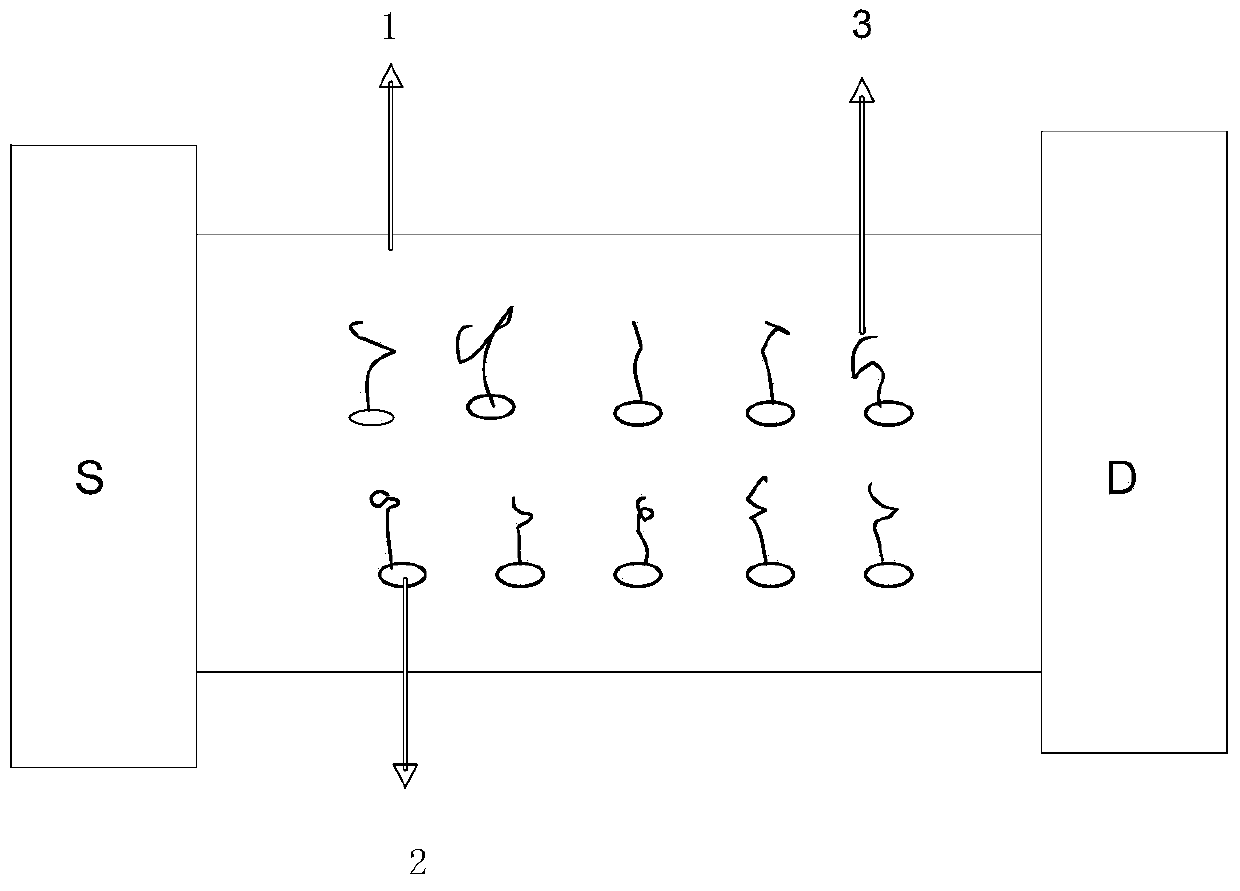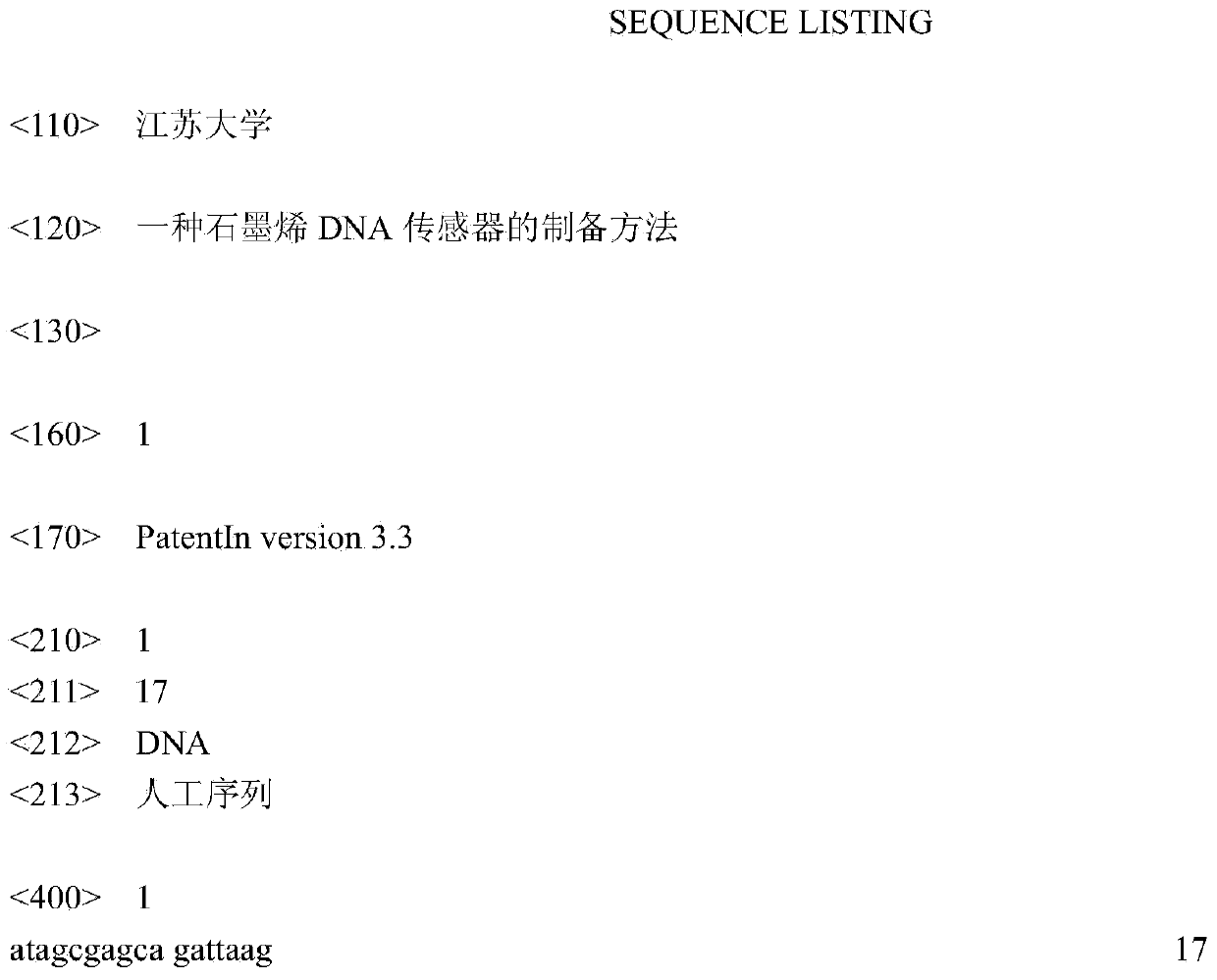Preparation method of graphene DNA (deoxyribonucleic acid) sensor
A graphene and sensor technology, applied in the field of graphene DNA sensor preparation, can solve problems such as limited samples for detection, and achieve the effect of good stability
- Summary
- Abstract
- Description
- Claims
- Application Information
AI Technical Summary
Problems solved by technology
Method used
Image
Examples
Embodiment Construction
[0017] The experimental methods described in the following examples, unless otherwise specified, are conventional methods; the materials, unless otherwise specified, can be obtained from commercial sources.
[0018] The graphene DNA sensor of the present invention is shown in Figure 1, S is the source, D is the drain, and the graphene surface 1 on the graphene transistor device connects DNA3 through the gold nanoparticle 2, thereby constitutes the graphene DNA sensor.
[0019] Concrete preparation steps are:
[0020] 1) Use chemical vapor deposition on copper foil to grow large-area continuous single-layer graphene; put copper foil in CVD (Chemical Vapor Deposition, chemical vapor deposition), pass hydrogen and methane, and react at 1050 ° C Afterwards, the hydrogen is cooled for storage.
[0021] 2) Soak the graphene grown on the copper foil in the gold nanoparticle solution; after growing the graphene on the copper foil in CVD, soak the copper foil in the 10nm-sized gold na...
PUM
| Property | Measurement | Unit |
|---|---|---|
| thickness | aaaaa | aaaaa |
| thickness | aaaaa | aaaaa |
Abstract
Description
Claims
Application Information
 Login to View More
Login to View More - R&D
- Intellectual Property
- Life Sciences
- Materials
- Tech Scout
- Unparalleled Data Quality
- Higher Quality Content
- 60% Fewer Hallucinations
Browse by: Latest US Patents, China's latest patents, Technical Efficacy Thesaurus, Application Domain, Technology Topic, Popular Technical Reports.
© 2025 PatSnap. All rights reserved.Legal|Privacy policy|Modern Slavery Act Transparency Statement|Sitemap|About US| Contact US: help@patsnap.com


